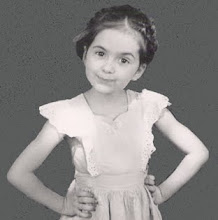No matter how long I know about a museum exhibit, I generally don’t manage to get there until the last day of the show!
This is a very unfortunate habit since I so often wish I could return for another viewing, for more inspiration. It also means I can’t recommend the show to my friends, no matter how much I think they, too, might appreciate it.
I've done it again. I recently visited the Caldwell Gallery at the Armory Center for the Arts in Pasadena -- on the closing day of an exhibition!
International Mail Art was a show comprised of over 8000 pieces from more than 25 countries. The exhibit was dedicated to Judith Hoffberg, who was an editor, archivist, curator, librarian, lecturer. She was, in fact, a great promoter of artists and a supporter of both mail art and artists books. All mail art included in the exhibition has been donated to the Judith A Hoffberg Archive at the UC Santa Barbara Library. Many of the entries were moving tributes to her – they made me wish I’d known her.

My sister makes artists books and we are both long-time fans of mail art, as admirers and creators. We enjoyed this show thoroughly! (There's an excellent slide show of the exhibit on flickr.) The pieces were done in a wide variety of techniques: collage, rubber stamps, photography to name a few! My favorites were the ones incorporating drawings or paintings.

Mail art (also known as correspondence art) is described in the press release from the exhibit as “art which uses the postal system as a medium.” This means that it might just be art with postage stamps (real or not) on it, or be made to look like or include an envelope, postcard, or package. Mail.
My personal interpretation is that it is a decorated envelope or postcard which is actually mailed……real mail, but decorated. Of course, few people write real mail any more…..
The modern mail art ‘movement’ evolved from the 1950’s on, but I have long been a fan of earlier mail art I’ve seen (though it wasn’t a ‘movement’ yet). Thursday I’ll blog about illustrated letters of artists and writers, going back to the 18th century. Apparently artists have never been able to resist the urge to draw on a variety of surfaces – and a blank envelope just cries out to be decorated!





















































